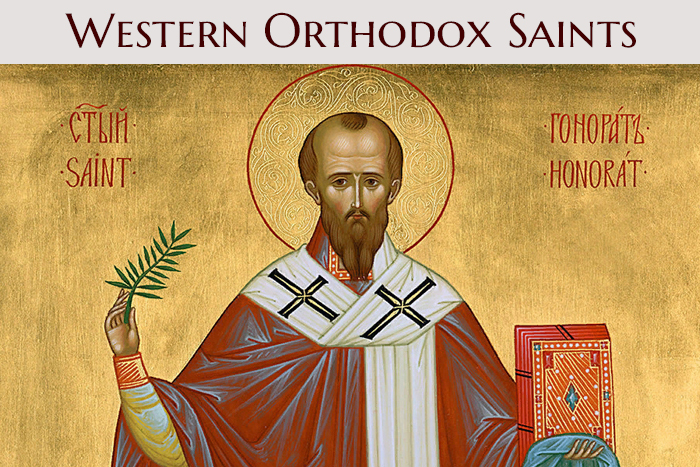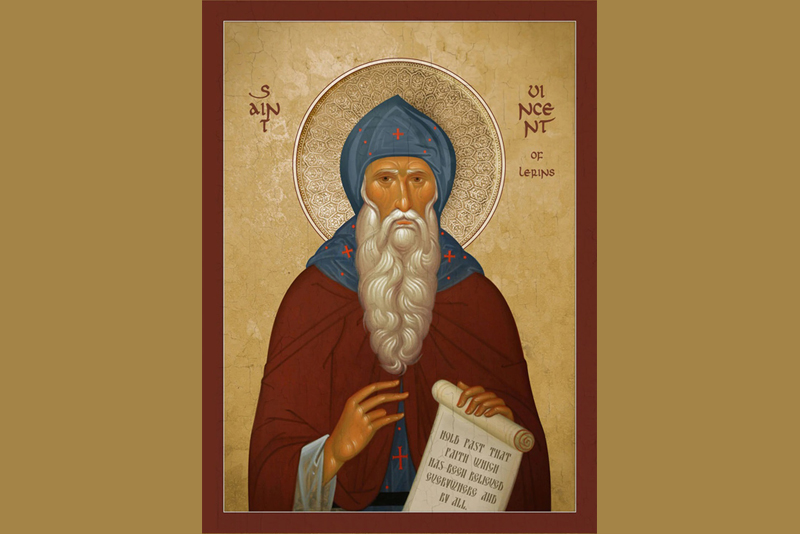
Christians commemorate St. Germanus of Auxerre, a saint from ancient Gaul, on July 31. By decree of the Synod of the Russian Church in 2017, this saint was included in the Russian Church calendar for general veneration. What did this ascetic, whom we still do not know much about, glorify God with?
The Calling
The future saint was born into a noble Gallo-Roman family in Autissiodorum, now Auxerre, France, in 378. He received an excellent education in the best Gallic schools of Arles and Lyon, and then studied law in Rome, where he eventually became a lawyer. Married to a devout Roman woman, he was appointed Duke of the Gaul border regions. However, he was not destined to hold a civil office – God gave Germanus a higher calling. The elderly local bishop St. Amator called the governor to the church, locked the doors behind him, and against Germanus’s will, tonsured him into clergy. Germanus accepted this unexpected turn of fate as God’s sign and was elected to the See of Auxerre in 418 by a unanimous decision of the people. The former Dux changed his life drastically: he worked hard to pray, fast and do ascetic deeds, serving the poor with his possessions. His hagiography informs us that he followed the example of the Lord by washing his guests’ feet and personally serving everyone at meals. The saint founded a coenobitic monastery in honor of Saints Cosmas and Damian on the banks of the local river, thus creating a unique Gallican monasticism, a century ahead of the Benedictine monasticism.
Mission to Britain
In 429, British bishops requested help to combat Pelagianism that had spread on the island. Holy Pope Celestine appealed to the Church of Gaul to help the British Orthodox. A Council of Gaul was convened for this purpose which decided to send St. Germanus of Auxerre and St. Lupus of Troyes to the Britons. On their way to Britain, in one of the Gallic towns, the saints saw a little girl standing in the crowd. St. Germanus blessed her and announced that the girl named Genevieve would be a great saint. Upon their arrival in Britain, the saints began to fight against the heresy of Pelagius, to which many clerics had been exposed. Germanus and Lupus triumphed in numerous disputes, thanks to their deep knowledge, as well as a miracle with a blind girl who recovered after Germanus applied a pouch of relics, which he always carried with him, to her eyes.
However, heresy was not the last trouble that swept across the island. Once the Roman administration left Britain in 410, barbaric tribes of Saxons and Picts became more active in the north. Together, they attacked the Britons. According to the chronicle of Bede the Venerable († 735), Germanus inspired the Orthodox warriors and called on the army to enter a valley surrounded by mountains on both sides and wait there for the enemy troops. When the barbarians approached, the entire army shouted Hallelujah three times at the request of the saint. Their cry reverberated from the mountains and had a terrifying effect on the enemy. Frightened by the supposedly large army, the enemies fled in panic. Having venerated the relics of Saint Alban, one of the first British martyrs, the saints left the lands of the Britons and returned to their homeland. Germanus visited Britain twice to fight Pelagianism. A legend contested by some scholars has it that one of the saint’s disciples was Saint Patrick, the Enlightener of Ireland, who was ordained bishop by Germanus.
The Petition to the Emperor
Shortly before the saint’s death, the inhabitants of Armorica Province in West Gaul rioted over exorbitant taxes imposed on them by the local administration. A Roman general named Aetius ordered the Alanian tribe led by King Goar, who served the Empire as mercenaries, to suppress the uprising. When Saint Germanus learned of this, he managed to intercept the punitive expedition and persuaded Goar to postpone the attack under the condition that this order would be approved by the Emperor. So the saint went to Ravenna, the residence of the Western emperors, in order to ask the Emperor Valentinian III (425-455) to pardon the Armoricans. The saint had numerous admirers among the royal court, and his petition could have been resolved favorably, but news of a second Armorican revolt came. This news, as well as the difficult journey he had to endure, undermined the strength of the seventy year old elder and he died in Ravenna in 448, bequeathing to bury his remains in his native Auxerre.
Galla Placidia, the mother and co-ruler of the Emperor, embroidered the bishop’s funeral robes by hand. The saint’s body was escorted by a huge procession to Auxerre, where his relics were placed in a chapel. The famous Abbey of Saint-Germain d’Auxerre, which later served as the burial vault for the bishops of Auxerre, was built on this site. The relics of Saint Germanus have not survived to this day, because they were desecrated by the Huguenots in 1567.
You can order an icon of any saint in our icon-painting studio



